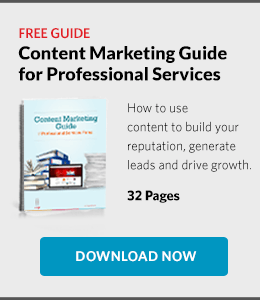Is your website fading into oblivion? It could be because of your poor content marketing strategy. There are countless examples of legendary marketing fails and more often than not, content is to be blamed.
From ad placement fails to grammar and spelling errors, an ineffective content strategy can kill your business in more than one way, often by damaging the flow of traffic to your website as well as sales conversions.
Even B2B and service-based industries are often found guilty of making grim content marketing mistakes, although they commit a different kind of crime. When it comes to content marketing strategies, B2B tend to underdo it. Most businesses don’t have a content strategy, and those few who have one in place, often do it wrong.
Mistakes You Need to Avoid
The Internet is filled with examples of content marketing faux-pas. And some of them will simply ruin your reputation and affect your website traffic and conversion rates negatively, which in turn can harm your business.

In order to be successful, you need to gain new clients and expand your relationship with existing ones. And content is often the way to do it. What you need is valuable, consistent, and relevant content that can influence buyer behavior in a positive way.
But to do so, you need to first avoid making common content marketing mistakes. Instead, use your content to gain credibility, paving the way to new business.
The following are 5 content marketing faux-pas you need to avoid.
1. Misused and Misplaced Keywords
Keywords are important, especially when it comes to being visibility in search engine results. But you can no longer stuff keywords unnecessarily and illogically into your content. In fact, Google has a strict policy and a ‘zero tolerance’ about keyword-stuffing and severely penalize websites following such practices.
So instead of stuffing your content with irrelevant keywords, you need to use keywords or keyword phrases that are directly relevant to the topic. The goal is not to overuse them as they must appear naturally within the content and not in a promotional manner.
2. Not Repurposing Content Correctly
When it comes to content marketing, one of the rules of thumb is to create high quality, interesting content. Whatever you are posting, be it a blog, article, video, image or infographic, it must be useful to the target audience and deliver engaging information. In short, your content must be compelling.
But creating content can be time-consuming. One solution to this problem? Repurpose your content. Done correctly, repurposing content can ease the strain on your resources. The problem is that many firms don’t execute on this technique effectively.
It can be difficult to disguise repackaged content as a fresh and unique piece, unless you have something really valuable to add.
For example, it is acceptable to refer to a post that has been published previously and build your case in favor or against the statement. In this case, you are adding something valuable (your opinion) and a fresh approach, making the content your own.
SEE ALSO: 3 Steps to Repurpose Your Content in B2B Content Marketing
Incorporate a fresh outlook to your blog posts and articles to become an industry leader. Discuss the latest trends, the market pushes and pulls, and things that interest people. Use proper data and facts to support your points and arguments. Become a thought leader, an influencer in your domain.
Your content should be a combination of research, reporting, presentation and editorial woven together seamlessly.
3. Not Publishing Content Regularly
Do you have a stagnant company blog? You aren’t alone. This is a continual problem for firms of all sizes. While a good rule of thumb to follow is updating your blog with fresh content at least once a week, the key here is consistency.
While Google and other major search engine penalize websites for plagiarism and other black-hat SEO practices, they also reward sites that regularly post new and relevant information with better and higher ranking on SERPs.
Fresh educational blog content is a great way to gain organic searches and get traffic from search engines, social media and other sources.
4. Lack of Goals
What are the goals of your content marketing efforts? Do you want to educate people about your services or increase brand awareness? Is it aimed to drive more traffic and generate sales leads? Or to improve your client retention and drive upsell?
The goals of content marketing are far reaching and therefore, it is essential for you to have a clear understanding of your objectives.
5. Overlooking Social Media
We really can’t believe anyone is actually committing this faux-pas, but unfortunately, many firms are. You need to integrate social media into your content marketing strategies.
Social media networks are your pool for resources to find compeling ideas as well as to create an engaged community. Professional services firms should, at a minimum, be building their LinkedIn and Twitter presence.
Your content marketing goals must be aligned with your social media strategies. Add social media buttons on your website and manage and share your posts via social media management dashboards.
Conclusion
You need to pay attention to create high-quality content that is interesting, insightful and engaging. And of course, it must be free of grammar and spelling errors as they can ruin your reputation and credibility in the long haul. All piece of content that you put out is an extension and representation of your firm’s brand — so make it count.
Additional Resources
- Download Hinge’s Content Marketing Guide for Professional Services Firms for more tips on creating content that builds credibility and demonstrates expertise.
- Get a copy of our Online Marketing for Professional Services book to learn techniques that will generate more leads and increase awareness of your firm.
How Hinge Can Help
Hinge has developed a comprehensive plan, The Visible Firm℠ to address these issues and more. It is the leading marketing program for delivering greater visibility, growth, and profits. This customized program will identify the most practical offline and online marketing tools your firm will need to gain new clients and reach new heights.


